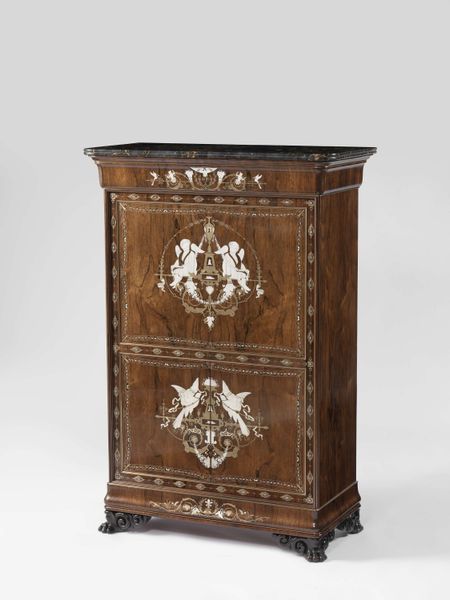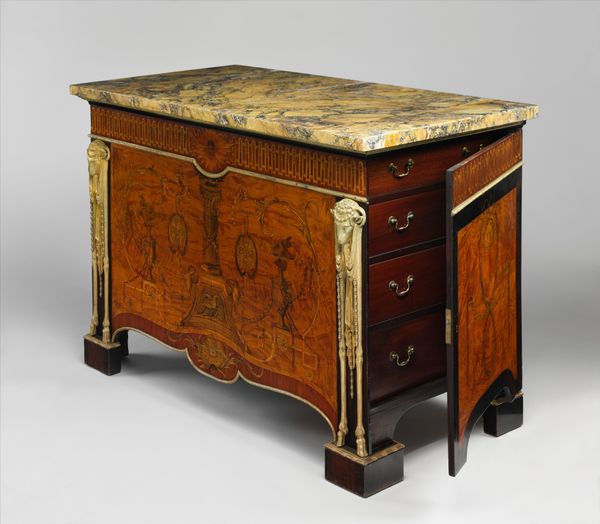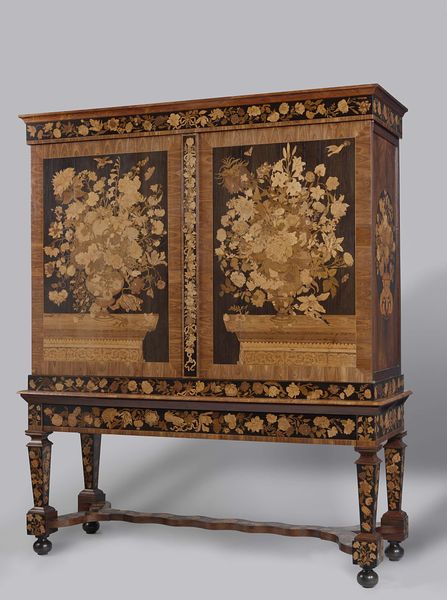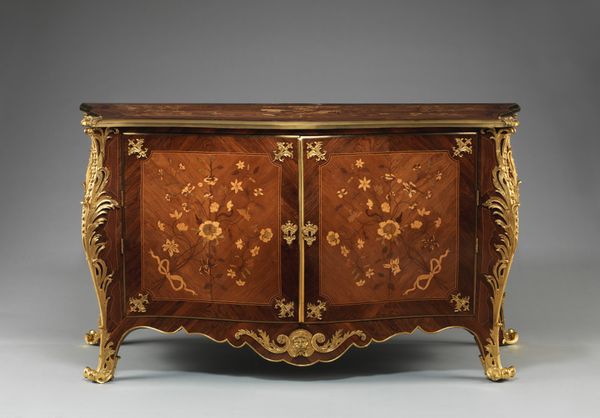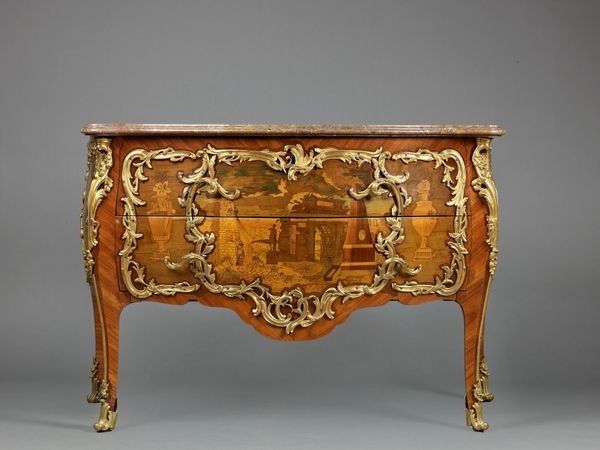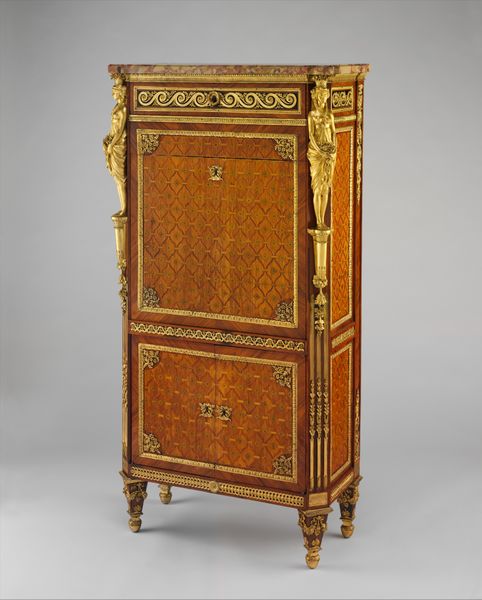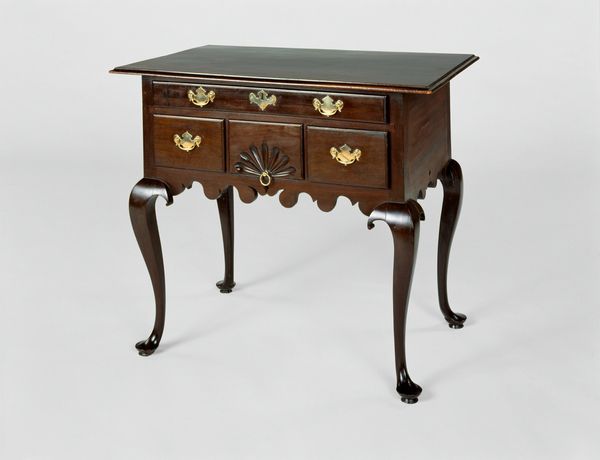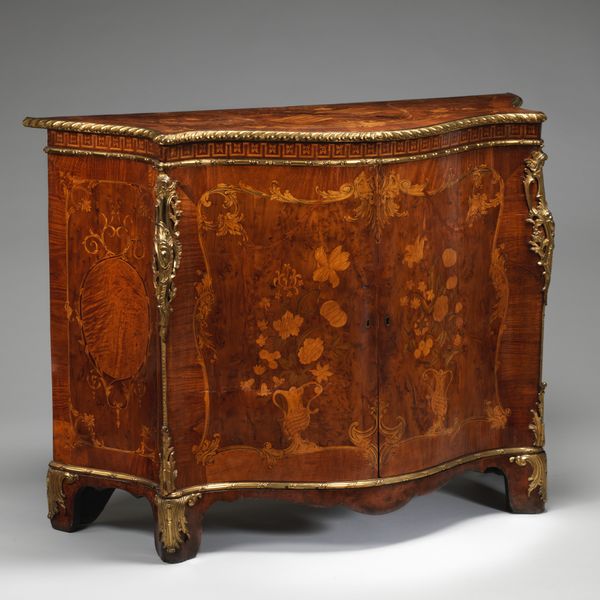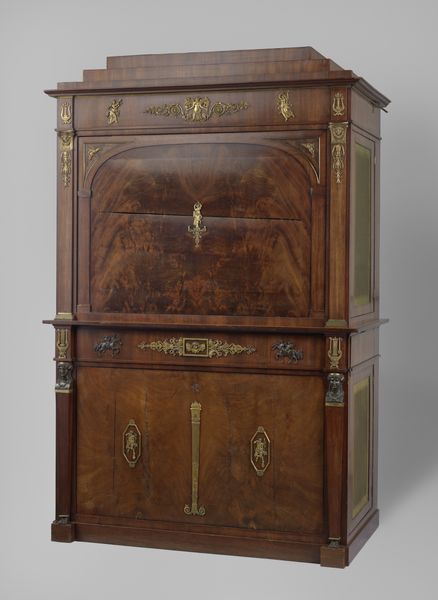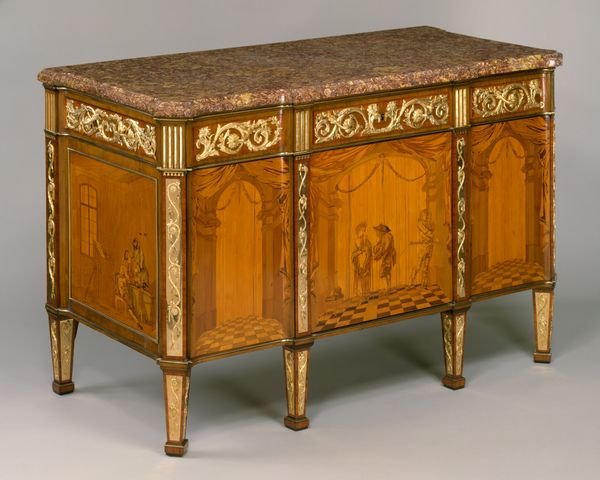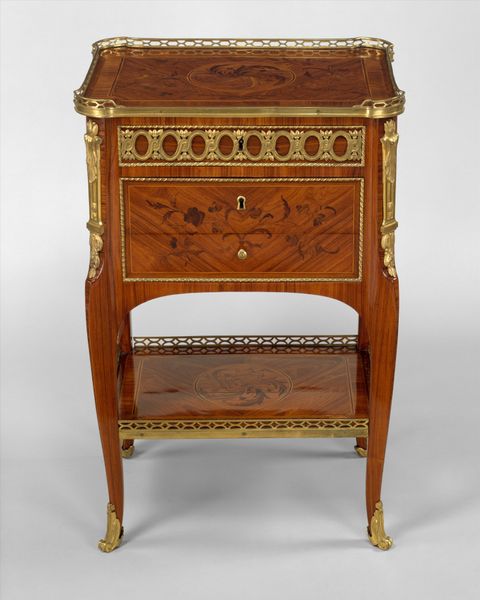
Dimensions: height 90.0 cm, width 121.0 cm, depth 50.5 cm
Copyright: Rijks Museum: Open Domain
This commode was made by Matthijs Horrix in the late 18th century. It’s a beautiful example of Dutch Neoclassical furniture. During this period, decorative arts were as much a reflection of societal values as paintings or sculptures. The commode, with its elegant marquetry and classical motifs, speaks to the era's emphasis on order, reason, and an idealized vision of the past. Consider the commode's function in the domestic sphere. Placed in a wealthy home, it would have been surrounded by other objects of luxury, each contributing to a carefully curated image of refinement. The commode embodies a certain level of privilege and social standing, yet also a kind of intimate, personal space. It’s a container of personal belongings, of secrets. The commode is not just an object of beauty, but also a mirror reflecting the values and complexities of its time.
Comments
rijksmuseum about 2 years ago
⋮
German-born Matthijs Horrix was the leading cabinet-maker in The Hague and the preferred purveyor of furniture to the stadtholder’s court. He specialized in furniture with marquetry decoration in the French style, and even named his shop in The Hague In de commode van Parijs (In the commode of Paris).
Join the conversation
Join millions of artists and users on Artera today and experience the ultimate creative platform.

